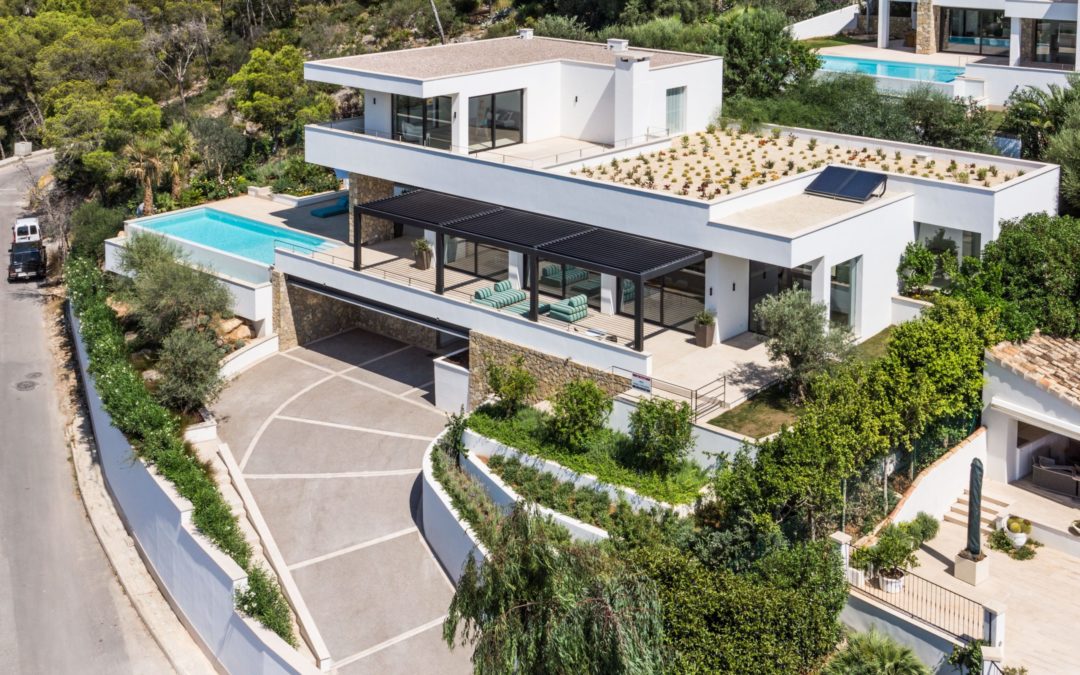The golden age of the Spanish residential market
26.07.2022
Real estate investment continues without hitting a ceiling in Spain. It is growing and growing like crazy and, according to the consultancy firm CBRE, it will reach 4,300 million euros in 2021, which represents 22% of total investment in Spain. The sector, which went through its lowest hours after the 2008 crisis, has shown its resilience in the last two years in the face of Covid-19, with double-digit growth in demand and an increase in the sale and purchase of new homes that is expected to continue to be positive this year, confirming these good forecasts. This boom has been driven by three factors: a consolidation in the sector, favoured by the banking sector; industrialisation, which is improving the quality of construction; and a growth in demand from a more demanding and digitalised consumer.
The first factor has to do with the market, which is now much better prepared than before and is undoubtedly much less stressed. Of the 700,000 homes that were approved in the pre-crisis period, today only 100,000 are being approved, when demand is twice as high. There is a shortage of new construction, but this is another symptom of the market’s good health. In other words, banks are not exactly expansive in their lending because the experience of previous crises has made them more selective when granting loans. For the consumer, lending conditions have tightened. For builders and developers, access to finance, too.
But make no mistake. This tightening has transformed financing into a guarantee for the residential real estate sector. The banks turned off the tap with the bubble almost 15 years ago, and the coronavirus crisis meant that they kept it that way, putting a ceiling and making a more exhaustive filter with their clients, financing only those who can demonstrate their solvency.
For companies, moreover, the requirements go further and it is not only necessary to prove that you can afford to repay a loan with a high level of pre-sales, but also that you have a sufficient track-record. The tables have turned with respect to the 2008 financial crisis and, today, the financial system is the actor that is best helping to contain a possible new real estate bubble.
Industrialisation
The second factor relates to increased industrialisation in construction, optimising processes, saving costs and improving quality. In addition, the industrialised projects of Construction 4.0, as it is now known in the sector, make it possible to generate more environmentally friendly processes, thanks to the reduction of energy consumption and carbon footprint.
However, the strength of industrialisation is the increase in quality. The precision of the elements offered by industrial manufacturing and the more exhaustive control of everything that has to do with the process lead to an increase in quality, by detecting and solving possible errors at the very moment of production.
Last but not least, there is a factor related to the growth and change in consumer demand, which has meant that developers have had to rethink the way we relate to them and how we offer our services, adapting them to the needs and problems faced by our clients.
Listening to the client
For this reason, we in the sector must encourage active listening to those customers who know the best way to live, who know what they want, when and how. On many occasions this does not happen because of a complete reformulation of our processes, but because of an adaptation towards the customer, who feels listened to, cared for and with solutions to their problems. Because, although our business is the construction and sale of real estate, our clients are people and families, each with their own needs and preferences.
All in all, it is no exaggeration to share a message of great optimism regarding the residential market in Spain, both for this year and for the years to come. The sector and the companies that are part of it have demonstrated their resilience to the pandemic crisis, not only because they have learned from past mistakes, but also because of the current lower level of leverage, due to some extent to the good turnover data recorded in recent years.
And, although we cannot predict the future, we believe that the residential market is currently a market with the capacity to withstand the economic dislocations we are experiencing, such as inflation, the shortage crisis or the rise in interest rates. Because this is a healthy market, with disturbances, but capable of overcoming them.
5D Diario.

